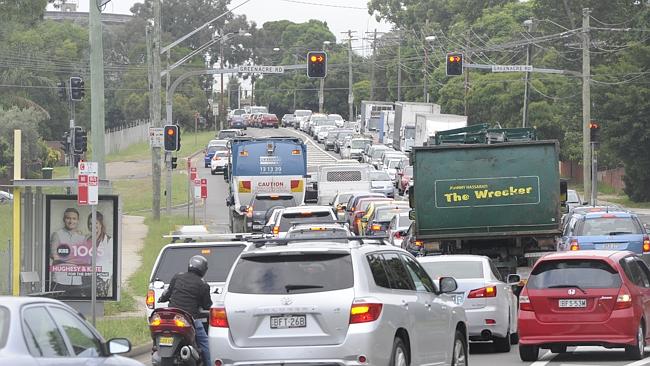Our government is ignoring problems of our growing cities
THERE are 15 million people living in our major cities, but our government is doing its best to ignore problems of a growing urban sprawl.

ANALYSIS
THE 15 million Australians living in our mainland capital cities have been left out of federal government policy at a time of massive shifts in population and employment.
This is the year in which the Coalition had promised a national livability index to rate major cities on such matters as traffic congestion and neighbourhood safety.
But there is no index, and specific policies for cities have vanished from the Coalition’s priorities.
This is despite big demographic and economic shifts which will see Sydney’s population soon reach five million and Melbourne become Australia’s largest city by 2051.
And that could mean it will get harder to live in your favourite city — with traffic jams and long hikes to school and work getting worse.
Early Government promises to monitor and fix problems in our most populous urban areas have been shelved and Treasurer Joe Hockey has been quoted saying of cities: “They’re not our jurisdiction.”
Labor has a frontbencher with responsibilities for cities, Anthony Albanese, and a committee keeping pace with issues such as traffic movement and access to public facilities such as schools.
“Given the population explosion in Australia’s capital cities, particularly Melbourne and Sydney, there is an urgent need for a more diligent approach to urban policy in Australia,” said Andrew Giles, chair of the Opposition’s Committee for Cities.
“The Abbott Government is in denial. Australia needs a national urban policy to manage this population growth to ensure Australia remains liveable.”
Much of the next federal election could be fought on the streets of our capitals, but it appears a one-sided debate.
The Government hasn’t always had a policy vacuum in this area. Environment Minister Greg Hunt was a champion of managed development of cities as he made clear in a March, 2014 speech in loving tribute to his late father Alan Hunt, a Victorian planning minister.
Alan Hunt was a pioneer supporter of “green wedges”, described as Melbourne’s “indispensable sanctuaries and oases of green space preserved for future generations”.
Greg Hunt told his audience “the challenges are relentless and we will have to meet those challenges head on if our cities are to retain their cherished livability status”.
He said: “I believe we are at a moment in history where each Australian city could bring together federal, state and local authorities to lay out an overarching physical road map for the next 30 and 50 years.”
Back in 2011 Mr Hunt, then in Opposition, proposed cities be indexed for livability and annually rated against tough benchmarks.
He suggested overhead power lines be buried instead and the “dead space” occupied by utilities freed for housing or shops.
This was to have been created by the Coalition’s sustainable cities taskforce and introduced in 2015. The idea has been quietly dropped.




